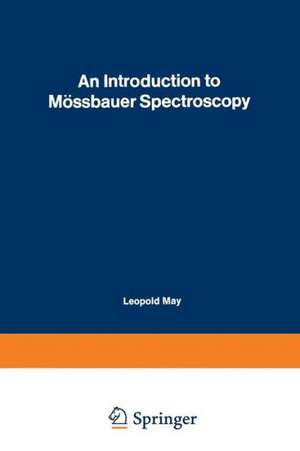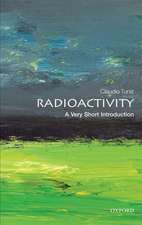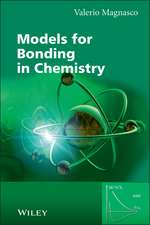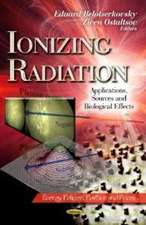An Introduction to Mössbauer Spectroscopy
Editat de Leopold Mayen Limba Engleză Paperback – 26 noi 2012
Preț: 382.95 lei
Nou
Puncte Express: 574
Preț estimativ în valută:
73.30€ • 79.65$ • 61.61£
73.30€ • 79.65$ • 61.61£
Carte tipărită la comandă
Livrare economică 21 aprilie-05 mai
Preluare comenzi: 021 569.72.76
Specificații
ISBN-13: 9781468489132
ISBN-10: 1468489135
Pagini: 216
Ilustrații: X, 204 p. 85 illus.
Dimensiuni: 152 x 229 x 11 mm
Greutate: 0.3 kg
Ediția:Softcover reprint of the original 1st ed. 1971
Editura: Springer Us
Colecția Springer
Locul publicării:New York, NY, United States
ISBN-10: 1468489135
Pagini: 216
Ilustrații: X, 204 p. 85 illus.
Dimensiuni: 152 x 229 x 11 mm
Greutate: 0.3 kg
Ediția:Softcover reprint of the original 1st ed. 1971
Editura: Springer Us
Colecția Springer
Locul publicării:New York, NY, United States
Public țintă
ResearchCuprins
1 Introduction to the Mössbauer Effect.- 1. Pictorial Description.- 2. Background Concepts.- 3. The Mössbauer Effect.- 4. Theory.- 2 Instrumentation.- 1. Instrumentation.- 2. Accuracy and Precision.- 3. Experimental Techniques.- 4. Applications of Computers to Mössbauer Spectra.- 3 Nuclear Properties Determined from Mössbauer Measurements.- 1. A Phenomenological View of the Hyperfine Interactions.- 2. Differences in the Nuclear Charge Radius?R/R.- 3. Nuclear Quadrupole Moments Q and Spins I.- 4. Nuclear Magnetic Dipole Moments.- 5. Nuclear Lifetimes.- 6. Internal Conversion.- 7. Parity, Multipole Mixing, and Time Reversal.- 8. Nuclear Reactions and Devices.- 4 The Electric Field Gradient Tensor.- 1. The “Standard Form” EFG Tensor Due to a Single-Point Charge.- 2. The Ligand Contribution.- 3. The Valence Electron Contribution.- 4. Quadrupole Splittings.- 5. Potpourri.- 6. The Utility of EFG Information.- Appendix I.- Appendix II.- 5 Application to Solid-State Physics.- 1. Isomer Shift.- 2. Magnetic Hyperfine Structure.- 3. Electric Quadrupole Interaction.- 4. Lattice Dynamics.- 6 Application to Coordination Chemistry.- 1. Crystalline Structure.- 2. Complex Isomerism.- 3. Structure of Complicated Complex Compounds.- 4. Electronic Structure of Molecules.- 7 Application to Organometallic Compounds.- 1. Isomer Shifts.- 2. Quadrupole Splitting.- 3. Conformational Studies.- 4. Conclusion.- 8 Mössbauer Spectroscopy and Physical Metallurgy.- 1. Mössbauer Application to Physical Metallurgy.- 1. 2. Phase Transition in Stainless Steel.- 1. 3. Internal Oxidation Studies.- 1. 4. Magnetic Properties in Au-Fe Alloys.- 1. 5. Near-Neighbor Interaction in ?-Fe-Mo Alloys.- 1. 6. Near-Neighbor Interaction in Fe-C Alloys.- 1. 7. Order-Disorder in FeAl and Fc3Al.- 1. 8. Thin Filmsand Superparamagnetism.- 2. Physical Metallurgy Considerations Concerning the Mössbauer Effect.- 3. Summary.- 9 Application to Biochemical Systems.- 1. Hemoproteins.- 2. Experimental Conditions.- 3. Effect of Experimental Variables.- 4. Spin-Spin Equilibrium.- Appendix A Nomenclature of Mössbauer Spectroscopy.- Appendix B Bibliographic Sources.- Appendix C Selected References on Mössbauer Spectroscopy.











